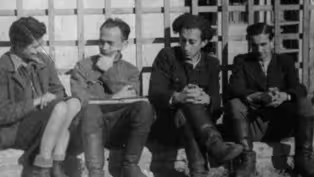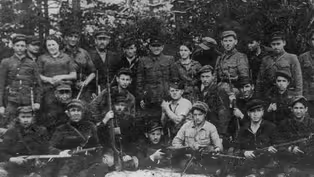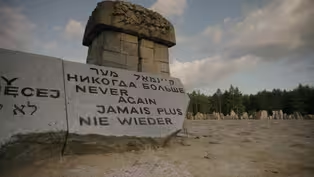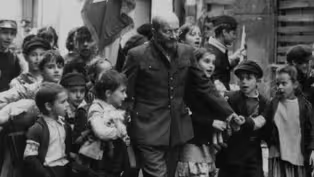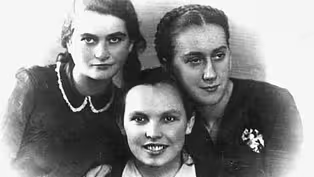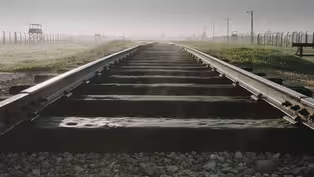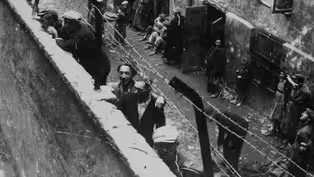
Resistance in the Ghettos
Clip: 1/27/2025 | 3m 41sVideo has Closed Captions
Few Jews had access to weapons in the Warsaw Ghetto, but they resisted nonetheless.
In the Warsaw Ghetto, as in the more than 1200 ghettos into which the Germans forced the Jewish population during World War II, few Jews had access to weapons. But they resisted nonetheless, in ways that helped defeat the Nazis.
Problems playing video? | Closed Captioning Feedback
Problems playing video? | Closed Captioning Feedback

Resistance in the Ghettos
Clip: 1/27/2025 | 3m 41sVideo has Closed Captions
In the Warsaw Ghetto, as in the more than 1200 ghettos into which the Germans forced the Jewish population during World War II, few Jews had access to weapons. But they resisted nonetheless, in ways that helped defeat the Nazis.
Problems playing video? | Closed Captioning Feedback
How to Watch Resistance: They Fought Back
Resistance: They Fought Back is available to stream on pbs.org and the free PBS App, available on iPhone, Apple TV, Android TV, Android smartphones, Amazon Fire TV, Amazon Fire Tablet, Roku, Samsung Smart TV, and Vizio.
Buy Now
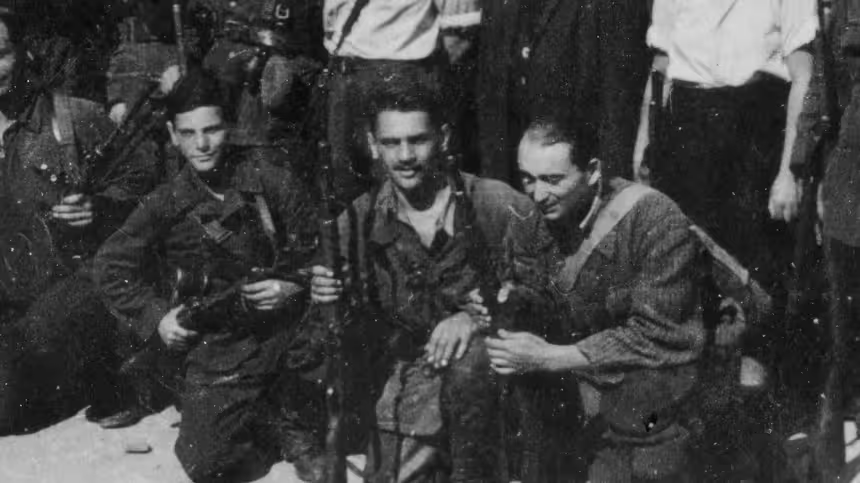
Learn More
"Resistance: They Fought Back" provides a much-needed corrective to the myth of Jewish passivity.Providing Support for PBS.org
Learn Moreabout PBS online sponsorship[birds chirping] PATT: So, people often want to know why the Jewish population didn't fight back immediately.
Half a million Jews crowded into the ghetto, why didn't they take up arms and fight back against the Germans?
- Collective punishment.
- Collective punishment.
STEVE: The Jews knew that you can start some resistance.
You can aim a pistol and shoot one person, two people, whatever it is, but the Germans would then arrest 2,000.
[tense music playing] [wings fluttering] PATT: But the truth is, from the very beginning, right, once they're crowded into the ghetto, they did resist in the ways that they knew best to do, resistance that was a type of spiritual resistance, resistance that was a way of standing up against the German oppressors.
Feeding the hungry, clothing the poor, taking care of orphans, these were strategies that Jews had used for centuries and which they fell back upon.
DINA PORAT: The unarmed resistance is called in Hebrew Amidah.
Amidah is standing, standing up.
Or in Yiddish, I would say... [speaking Yiddish] I'm not yielding to the situation.
Whatever you do that is against the situation is resistance.
Whether you sit or lie or crawl or swim or stand up makes absolutely no difference.
It's Amidah.
"Life in the ghetto was a chain of resistance.
"There were illegal schools.
"There were illegal libraries, "choirs, even theaters.
It was an illegal life."
The Germans wanted to destroy any kind of Jewish existence, also cultural existence, and so on.
So when you educated children in ghettos, if they survived for them to develop after the war, this was against the German idea, yeah?
"I organized a school in my building, "and I became the teacher of that school.
"I had never prepared for being a teacher, "but there were no schools.
All schools were illegal."
And if you always keep in mind that part of what the Germans wanted to do was to kill the body, but also to kill the soul, to undermine humanity, the humanity of the individual.
And therefore, if you never lost your humanity, then, in a very real sense, you're helping to defeat the Germans.
"Although you see today how the pictures, "mostly from Germans, pictures of Jews "who were beggars and pitiful.
"A-And this is taken because the Germans "would like us only to be seen this way.
"This was only one part of the ghetto.
It was true.
There were beggars."
"But there was another kind of life full of activities and spiritual resistance."
[poignant music playing] <end subtitles>
The Evolution of Armed Resistance
Video has Closed Captions
Clip: 1/27/2025 | 2m 54s | Kovner wrote a Manifesto, the first published call for Jews to fight back. (2m 54s)
Jewish Partisans in the Forest
Video has Closed Captions
Clip: 1/27/2025 | 3m 26s | Many groups of Jews escaped the ghettos to fight in the forests, denying these areas to Germans. (3m 26s)
Video has Closed Captions
Clip: 1/27/2025 | 1m 46s | Even in Nazi death camps, Jews rebelled. (1m 46s)
Questioning the “sheep to the slaughter” myth…
Video has Closed Captions
Clip: 1/27/2025 | 1m 39s | Children were among the most tragic victims in the Holocaust. (1m 39s)
The Role of Women in the Resistance
Video has Closed Captions
Clip: 1/27/2025 | 5m 36s | Women played an outsized role in the Jewish resistance, risking their lives daily. (5m 36s)
Video has Closed Captions
Preview: 1/27/2025 | 30s | During the Holocaust Jews did not go to their deaths as sheep to the slaughter; they fought back. (30s)
Video has Closed Captions
Clip: 1/27/2025 | 5m 2s | The Warsaw Ghetto Uprising was the first armed battle against the Germans. (5m 2s)
Providing Support for PBS.org
Learn Moreabout PBS online sponsorshipSupport for PBS provided by:
